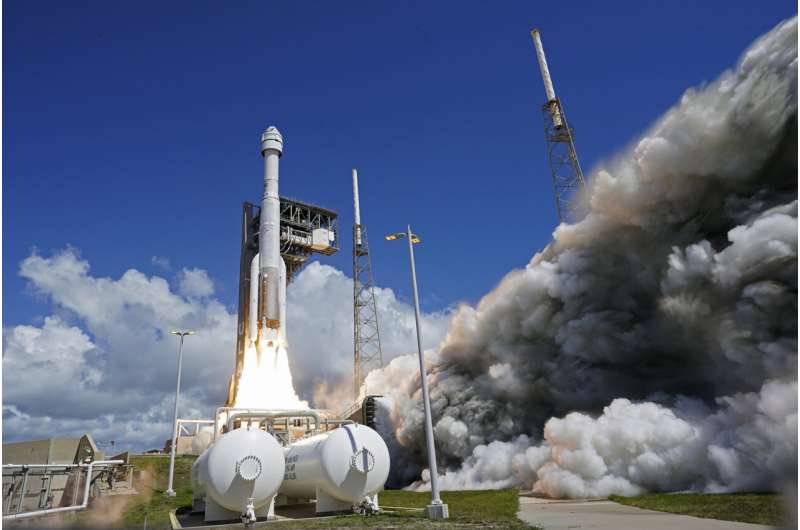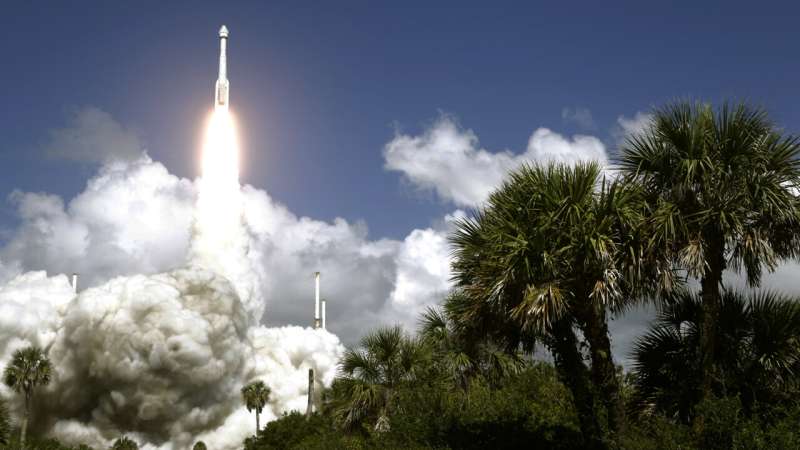This article has been reviewed according to Science X's editorial process and policies. Editors have highlighted the following attributes while ensuring the content's credibility:
fact-checked
reputable news agency
proofread
Space station arrival by Boeing's astronaut capsule delayed by new leaks and thruster trouble

Boeing's space capsule developed more leaks and ran into thruster trouble during its first test flight with astronauts as it closed in on the International Space Station on Thursday.
The Starliner capsule already had one small helium leak when it rocketed into orbit Wednesday. Boeing and NASA managers were confident they could manage the propulsion system despite the problem and that more leaks were unlikely. But just hours into the flight, two more leaks cropped up.
Later four of the 28 capsule's thrusters went down. NASA test pilots Butch Wilmore and Suni Williams managed to restart two of them, but it did not offer enough safety margin for the docking.
Mission Control ordered the pair to get no closer than 650 feet (200 meters) to the space station, delaying the planned arrival for at least an hour. It was not immediately known whether these thrusters problems were related to the earlier leaks.
"Still analyzing all the data," Mission Control radioed. "Sit tight." Minutes later, controllers said they had enough confidence to press in for the docking on the next go-around.
Earlier in the day, before the thrusters malfunctioned, Boeing spokesman Jim May said the leaks pose no safety issues for the astronauts or the mission.

May said the capsule holds plenty of helium reserves to make up for what's lost. The propulsion system will be disabled once the capsule is docked at the space station since the thrusters will not be needed then, he said.
Helium is used to pressurize the fuel lines of Starliner's thrusters, which are essential for maneuvering. Before liftoff, engineers devised a plan to work around any additional leaks in the system. A faulty rubber seal, no bigger than a shirt button, is believed responsible for the original leak.
After the space shuttles retired, NASA hired Boeing and SpaceX to ferry astronauts to and from the space station. SpaceX's taxi service began in 2020. Boeing was supposed to start around the same time, but was held up for years by safety concerns and other troubles.
Boeing plans to keep Starliner at the space station for at least eight days before guiding it to a landing in the western U.S.
© 2024 The Associated Press. All rights reserved. This material may not be published, broadcast, rewritten or redistributed without permission.





















